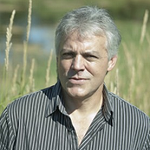Tree Planting and Forest Expansion for Biodiversity and Ecosystem Services
A special issue of Forests (ISSN 1999-4907). This special issue belongs to the section "Forest Economics, Policy, and Social Science".
Deadline for manuscript submissions: closed (15 April 2019)
Special Issue Editor
Special Issue Information
Dear Colleagues,
Many factors may be driving forest diversity lower globally, including narrowly focused management paradigms, invasive pests and pathogens, and climate change. It is imperative that we actively manage to increase tree diversity in diversity-degraded forests, given that the resilience of these forests in the face of future threats is compromised and because current management may be unsustainable. The most straightforward way to increase diversity in existing forests, or to establish new diverse forests, is to plant trees. However, while tree planting is a well-developed practice, there is much new information needed to address novel issues confronting tree planting aimed at increasing biodiversity and ecosystem services. As examples, 1) many forest systems potentially benefitting from planting for diversity have traditionally been managed for natural regeneration so there is little experience with planting, 2) there is little information to help guide multi-species stand establishment as planting for this purpose has traditionally focused on single species, and 3) planting locally- or regionally-novel species could be used to augment diversity and adapt to climate change, yet little is known about how planted trees will perform in the face of novel stressors, including different environmental regimes, competitors, canopy disturbance regimes, and herbivory. In this Special Issue we encourage the submission of studies that address these issues and others pertaining to tree planting and forest expansion for biodiversity and ecosystem services. We welcome studies that have both strong basic and applied components, given the need to both better understand tree regeneration dynamics and to develop of information and tools that managers can use.
Prof. Michael Walters
Guest Editor
Manuscript Submission Information
Manuscripts should be submitted online at www.mdpi.com by registering and logging in to this website. Once you are registered, click here to go to the submission form. Manuscripts can be submitted until the deadline. All submissions that pass pre-check are peer-reviewed. Accepted papers will be published continuously in the journal (as soon as accepted) and will be listed together on the special issue website. Research articles, review articles as well as short communications are invited. For planned papers, a title and short abstract (about 100 words) can be sent to the Editorial Office for announcement on this website.
Submitted manuscripts should not have been published previously, nor be under consideration for publication elsewhere (except conference proceedings papers). All manuscripts are thoroughly refereed through a single-blind peer-review process. A guide for authors and other relevant information for submission of manuscripts is available on the Instructions for Authors page. Forests is an international peer-reviewed open access monthly journal published by MDPI.
Please visit the Instructions for Authors page before submitting a manuscript. The Article Processing Charge (APC) for publication in this open access journal is 2600 CHF (Swiss Francs). Submitted papers should be well formatted and use good English. Authors may use MDPI's English editing service prior to publication or during author revisions.
Keywords
- Planting
- Tree Diversity
- Forest Resilience





